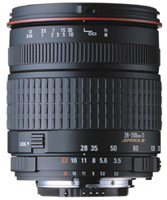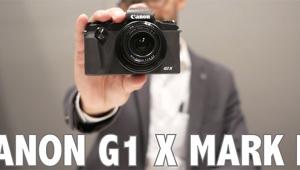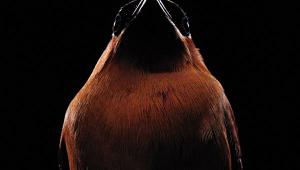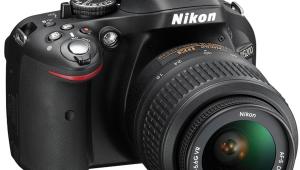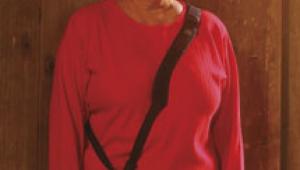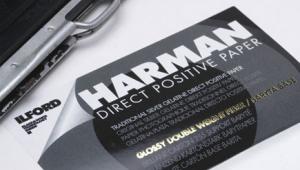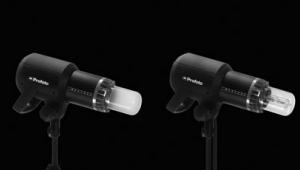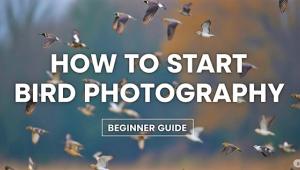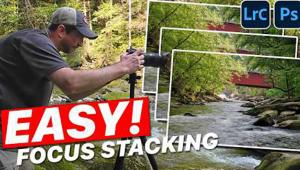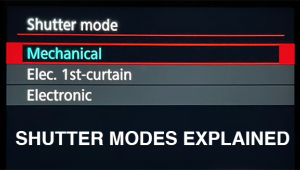Lenses For 35mm SLR Cameras
Whether you own a digital or conventional SLR camera--or both--you certainly need lenses. So, even in this "year of the digital camera," the manufacturers continue expanding their lines. In the recent past, we have seen many new ultra-wide angle lenses, especially targeting those who use digital SLR cameras that increase the effective focal length. (This increase occurs because the image sensor of most digital cameras is smaller than a 35mm film frame.) During the PMA show however, only two ultra-wide lenses--both zooms--were introduced. This was "the year of the zoom," particularly those of lower weight, size, and price. Perhaps one day, someone will invent a 20-300mm zoom that will fit into a shirt pocket and weigh only a few ounces. In the meantime, some of the following lenses should certainly meet our needs. |
|
All-Purpose Zoom Lenses The Sigma AF 28-300mm f/3.5-6.3 IF Compact Hyper Zoom Aspherical lens is similar, but this model features internal focusing; weight distribution remains constant at all focused distances and the front element does not rotate. This zoom is also highly portable: it weighs only 19 oz and is only 3.6" long (filter size: 67mm). The minimum focus distance is 35.4" at the 28mm and the 300mm ends. (Street Price: under $350.) |
|
Short Zoom Lenses Expanding its line of N-series autofocus lenses for their conventional and digital SLR cameras, Contax announced a new N Vario Sonnar zoom. An ideal "standard" lens for the new autofocus N camera, the T* 28-80mm f/3.5-5.6 is compact and lightweight for a Carl Zeiss lens (54mm filter size; 12 oz). It features one aspherical element to correct optical aberration and close focusing to 1.6 ft at all focal lengths and a very short 10" in the tele-macro mode. (Street Price: $550.) At the other end of the price spectrum, there's the new Carl Zeiss N T* 17-35mm f/2.8, an impressive ultra-wide zoom with three aspherical elements, two low dispersion elements plus one element of "high index glass," intended to correct all optical aberrations. This model includes an ultrasonic focus motor for fast, nearly silent AF operation. It's as huge and heavy (95mm filter size; 29 oz) as you might expect, but this fast zoom is said to produce extraordinary image quality across the frame. (Street Price: $2375.) Pentax released a new "standard" zoom lens, the FA Zoom 28-90mm f/3.5-5.6 lens, more versatile than the previous 28-80mm model. It will focus to a short 1.3 ft and is very small and lightweight (58mm filter size; 6.9 oz). Finished in silver to match recent ZX-series Pentax cameras, it might become the most popular lens in the Pentax AF line. (List Price: $117.) Although the new M7 rangefinder attracted far more attention, Leica also released a lens for its R-series SLR cameras. The new Vario-Elmar R 21-35mm f/3.5-4 ASPH is a gorgeous lens--large, heavy, and solidly built. (It weighs 16 oz and requires E67 filters.) A corner cut lens hood is included. (List Price: $2100.) This Leica lens is said to be the first to incorporate a "concave aspherical" element. According to Leica Camera Inc., "this inward-curving non-spherical shape requires state of the art computer controlled measurement and engineering technology guided by specific expertise." The entire optical formula is impressive, with two aspherical elements, two of highly refractive glass plus two with partial anomalous dispersion. These should effectively correct all aberrations. In fact, Leica says, "the definition and contrast are comparable with that of the corresponding fixed focal length lenses while barrel distortion is negligible." Last year, Nikon introduced the new series of G-type zooms, designed to be especially affordable and lightweight. Including all of the technology required for incorporating subject distance data for flash and ambient light exposure processing, the G-type models are unusual in only one respect. They do not include an aperture ring. That's understandable, because this series was intended for the newer Nikon cameras that allow for f/stop selection with an electronic dial. Nikon has now introduced two new lenses in this series. The AF-S Zoom Nikkor 24-85mm f/3.5-4.5G ED-IF is particularly noteworthy. Featuring the Silent Wave (ultrasonic) focus motor, its AF response seemed to be very fast and nearly silent. Internal focusing also helps to assure smooth focusing. Although it's small (67mm filter size; 14.1 oz), this lens should produce excellent results, thanks to an optical system that includes an aspherical element plus an ED glass element, to correct aberrations at all focal lengths. Other features include 1.2 ft minimum focusing, rounded diaphragm (with seven blades) that should render out of focus highlights as circular at any aperture, non-rotating front element, corner cut lens hood, and a Manual/Auto Focus switch. (Price not yet set.) |
|
The new AF Nikkor 28-100mm f/3.5-5.6G zoom is compact and lightweight (62mm filter size; 8.6 oz) and surprisingly affordable for a Nikkor lens. This G-type model includes all the essential features: an aspherical element, rounded diaphragm, and close focusing to 22". Zooms of this type help Nikon to compete effectively with independent brand lenses, and the versatile 28-100mm focal length should make this one more popular than the typical 28-80mm or 28-90mm zooms. (List Price: $170.) Telephoto Zoom Lenses |
|
Bucking the trend toward compact zooms, Nikon showed us a prototype of a new (50.4 oz) model that might be available by the time you read this. The AF-S VR Nikkor 70-200mm f/2.8G IF-ED--with five Extra Low Dispersion elements and magnesium alloy barrel--will be their first pro zoom without an aperture ring. This model includes two Vibration Reduction modes to produce sharp images at long shutter speeds ("a three-step advantage") when hand holding the camera. "Standard VR" is for normal shooting and "Active VR" is for panning with motion or for shooting from a helicopter or other platform under intense vibration. This AF-S lens will include the Silent Wave motor so autofocus will be swift and quiet. Internal focusing should produce smooth operation, and will maintain optimal lens balance. In addition to the usual black, Nikon plans to offer this lens in a light gray finish as well. The price was not available at press time. |
|
Super Tele-Zooms Vivitar introduced a similar lens, the 600-1000mm f/9.9-16 Super Telephoto with four elements in two groups, also multi-coated to resist flare. A diaphragm mechanism allows the lens to be used in Aperture Priority AE or Manual mode with most cameras. This Vivitar model weighs only 30 oz, and accepts 72mm filters or 77mm filters if attached to the lens hood. (List Price: $499.) The Vivitar lens is sold in a kit with a 2x tele-converter that extends the effective focal length to 2000mm, but the accessory reduces the effective maximum aperture to only f/32. The Phoenix and Vivitar lenses feature very long focal lengths while their maximum apertures range from small to minuscule. In order to minimize the risk of image blur from camera or subject movement, plan to use a high-speed ISO 800 or 1600 film and a tripod. Note that both lenses require a T-mount accessory; suitably equipped, either lens will fit a broad variety of cameras. |
|
A New "Normal" Lens |
